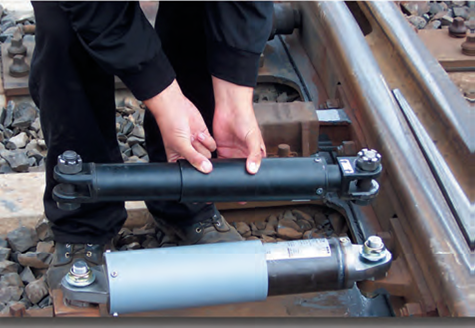
Dumb viscoelastic materials are moderately capable, at least that’s the case when large machines send out threshold-menacing quantities of shock energy. However, if the shock energy becomes unmanageable, a smarter force dampening mechanism becomes necessary. That’s where Enidines’ hydraulic timing devices enter the scene. Capable of intelligently governing massively complex load profiles, these shock retardation systems offload parts fracturing energies and isolate alloy-crushing vibrations in a way that few viscoelastic mediums can match.
Deconstructing HTD Housings
To tell the truth, it’s not easy to take one of Enidines’ HTDs (Hydraulic Timing Devices) apart. The rod-like shock load retarders are sealed and built to be maintenance-free. Yet they offer an extended service life, which seems designed to benefit the heaviest possible industrial applications. Mentioned in their literature several times, railway tracks utilise the devices as “spring frog” return delay mechanisms. That Flange-Bearing-Frog (FBF) apparatus comes into play on heavy rail exchanges, places where tracks cross. With overloaded railway freight crisscrossing our nations while carrying some of the transportation sector’s most intolerably weighty loads, these locomotive stabilising mechanisms wouldn’t last long, not if they were snapping back after every kilometre long train had passed. By fitting Enidine hydraulic timing devices, those energies are deftly handled.
Characterised By a Wealth of Features and Facilities
Let’s see, as a railway line meets, the junction switches over. The switching operation takes place back at a signalman structure or, more commonly, at an automated switching station. Between the line elements, a shielded piston and rod uses its environmentally friendly fluid dampener to extend the life of the rail switching components. Massive energies are on the move here, and there’s a matching amount of spring-back force to manage, which the HTD fluids handle with great fluency. Since the general wear and tear is redirected away from the wing rail and locomotive drive system, the devices attached as shock retarders do become saturated in shock energies, but that’s not really an issue. Designed to be reconditioned and serviced, it’s much easier to repair an Enidine hydraulic timing device rather than a heavy-duty railway switch.
Designed to extend the life of load tortured railway switches and crossing points, these shock retardation rods are built to fit existing railway installation brackets, so a retrofitting project can proceed with confidence when they’re purchased. Again, just like with all other Enidine sourced and designed products, upgradeability is a key feature here, one that’s sure to please an overextended railway line manager this time around. Tested by FBF manufacturers and class I railroad operators, they exist to keep trains on the move and in-transit.
For more information, visit our Enidine page or contact us.

